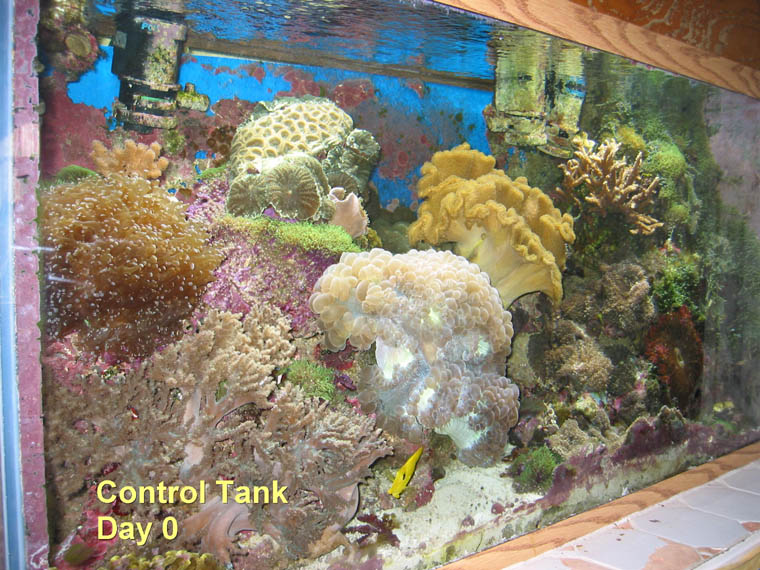Example: Barium Supplement
BaCl2 (2H2O)
1. I find molecular weight (244 gram per mole), do this by adding molecular weight of each element (multiply as needed)
2. now take the weight of the primary trace element and divide by the sum of the molecular weight to find percentage weight ( 137 / 244) = 56.2% barium by weight
3. now take a sample solution, in this example I weigh out 5 grams of Barium Chloride. I divide by weight of 500ml of RO water which is 500 grams, so grams cancel. 5/500 = 0.01 * 56.2% barium by weight is 5614 ppm (mulitply result by 1 million to get to ppm)
4. I found concentration too high, so diluting by only putting 10ml / 200ml (10ml solution in 200ml water, so 0.05 * 5614 = 280ppm.
5. Now we have 210ml of Barium trace element solution that is 280 ppm concentration, so how much do we need to buff our tank?
6. in my example, I needed to calculate how many ml to bump 300 gallons of water up by 0.1microgram/L.
280 ppm * Xml = 0.1ug/L * 300 gallon * 3.785 L / gallon
liters and gallons cancel out, and left with microgram, which is equal to microliters
now divide both sides by 280ppm concentration
0.1uL /280ppm * 300 * 3.75 = 0.4 = xmL
*** above I think maybe I have a mistake? uL/ppm, do I need to convert to L then to mL, so maybe multiply the result by 1000??? Am I even close on this calculation?
BaCl2 (2H2O)
1. I find molecular weight (244 gram per mole), do this by adding molecular weight of each element (multiply as needed)
2. now take the weight of the primary trace element and divide by the sum of the molecular weight to find percentage weight ( 137 / 244) = 56.2% barium by weight
3. now take a sample solution, in this example I weigh out 5 grams of Barium Chloride. I divide by weight of 500ml of RO water which is 500 grams, so grams cancel. 5/500 = 0.01 * 56.2% barium by weight is 5614 ppm (mulitply result by 1 million to get to ppm)
4. I found concentration too high, so diluting by only putting 10ml / 200ml (10ml solution in 200ml water, so 0.05 * 5614 = 280ppm.
5. Now we have 210ml of Barium trace element solution that is 280 ppm concentration, so how much do we need to buff our tank?
6. in my example, I needed to calculate how many ml to bump 300 gallons of water up by 0.1microgram/L.
280 ppm * Xml = 0.1ug/L * 300 gallon * 3.785 L / gallon
liters and gallons cancel out, and left with microgram, which is equal to microliters
now divide both sides by 280ppm concentration
0.1uL /280ppm * 300 * 3.75 = 0.4 = xmL
*** above I think maybe I have a mistake? uL/ppm, do I need to convert to L then to mL, so maybe multiply the result by 1000??? Am I even close on this calculation?




















